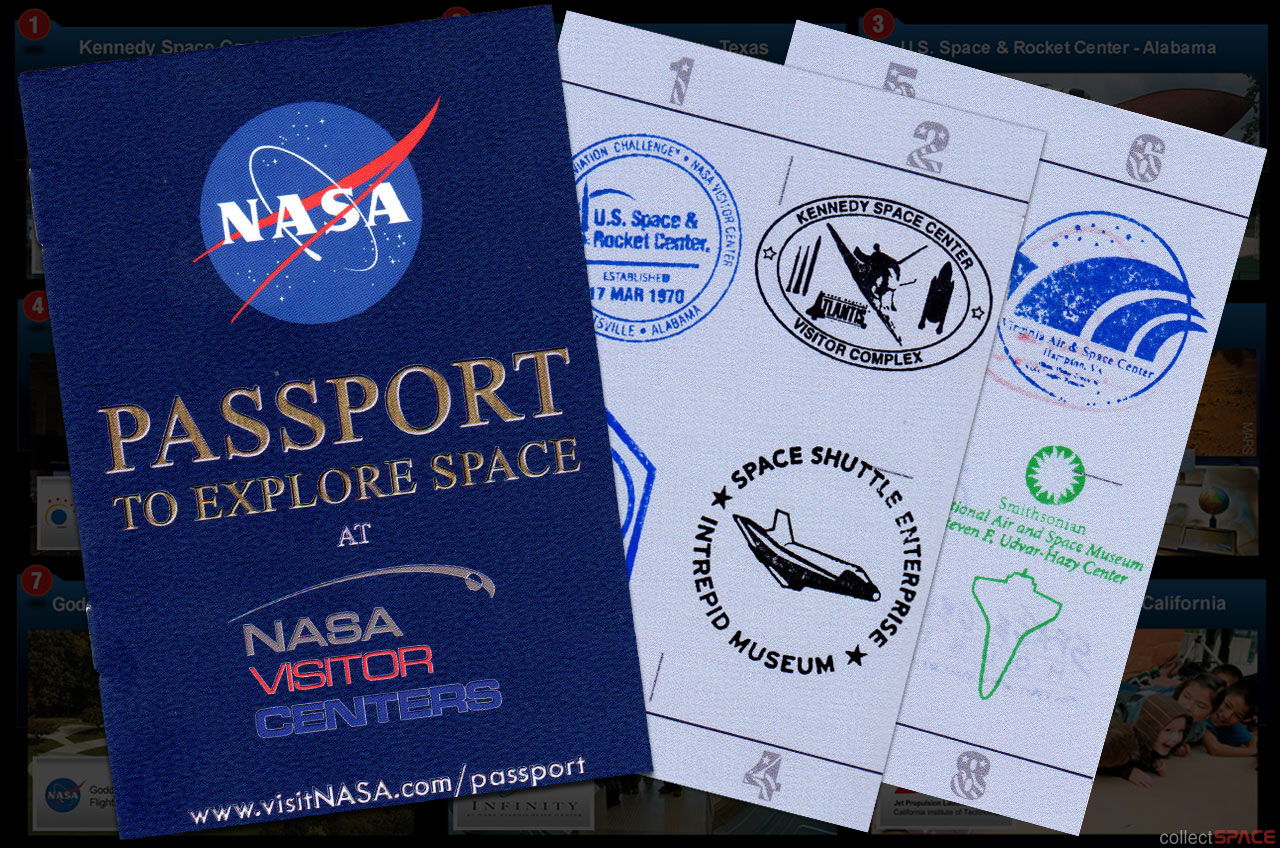NASA Visitor Centers Launch New Passport for Space Tourists

Earth-bound space tourists hitting the road this summer to tour NASA's historic launch pads and mission controls, as well as see the retired space shuttles on display, now have their own passport.
The "Passport to Explore Space" is now being offered by the official visitor centers for NASA's nationwide facilities and the museums that display the space agency's former orbiter fleet. Guests to the 14 locations in nine states can get the passports stamped with commemorative markers representing each of the centers, earning them offers and discounts in the process.
"Get ready to explore and experience NASA's universe of diverse visitor centers and the museums which house America's four space shuttles!" promotes VisitNASA.com, the website for the "Passport to Explore Space" program and NASA's tourist attractions. "Your mission is to visit all 14 visitor centers and space shuttle locations." [Where to See America's Greatest Spaceships (Infographic)]
The program includes the Kennedy Space Center Visitor Complex in Florida, where space shuttle Atlantis will open on display June 29; the Smithsonian's Steven F. Udvar-Hazy Center in Virginia where space shuttle Discovery is exhibited; the California Science Center in Los Angeles where shuttle Endeavour is housed; and the Intrepid Sea, Air & Space Museum in New York City, which will reopen the pavilion showcasing the prototype orbiter Enterprise on July 10.
Other locations participating in the passport program include Space Center Houston, the visitor center for NASA's Johnson Space Center; the U.S. Space and Rocket Center, the Alabama home to Space Camp and the visitor center for Marshall Space Flight Center; the Great Lakes Science Center in Cleveland, which hosts Glenn Research Center's visitor center; and the INFINITY Science Center, which represents Stennis Space Center in Mississippi.
Rounding out the list are the official visitor centers for Goddard Space Flight Center in Maryland; NASA's Ames Research Center, Dryden Flight Research Center and Jet Propulsion Laboratory in California; and the Wallops Flight Facility and Langley Research Center in Virginia, the latter at the Virginia Air and Space Center in Hampton.
The free eight-page passport booklet can be obtained by visiting the participating locations after registering for the program online. Visitors must be at least 18 years old to join.
Get the Space.com Newsletter
Breaking space news, the latest updates on rocket launches, skywatching events and more!
Passport holders can receive discounts off of admission, attractions, food and souvenirs at some of the locations. For example, the Kennedy Space Center Visitor Complex offers $5 off regular price admission and 10 percent off of merchandise and its "Lunch with an Astronaut" program.
Nearly four million people tour the NASA centers annually, according to VisitNASA.com.
"NASA visitor centers tell the story of America's amazing spirit and exciting history of space exploration to visitors from around the world," said Roger Bornstein, the director of marketing for Space Center Houston, in a statement. "Visitors will not only be enriched, but inspired with the scores of artifacts, family entertainment and exceptional educational programs."
Follow collectSPACE.com on Facebook and on Twitter at @collectSPACE. Copyright 2013 collectSPACE.com. All rights reserved.
Join our Space Forums to keep talking space on the latest missions, night sky and more! And if you have a news tip, correction or comment, let us know at: community@space.com.

Robert Pearlman is a space historian, journalist and the founder and editor of collectSPACE.com, a daily news publication and community devoted to space history with a particular focus on how and where space exploration intersects with pop culture. Pearlman is also a contributing writer for Space.com and co-author of "Space Stations: The Art, Science, and Reality of Working in Space” published by Smithsonian Books in 2018.In 2009, he was inducted into the U.S. Space Camp Hall of Fame in Huntsville, Alabama. In 2021, he was honored by the American Astronautical Society with the Ordway Award for Sustained Excellence in Spaceflight History. In 2023, the National Space Club Florida Committee recognized Pearlman with the Kolcum News and Communications Award for excellence in telling the space story along the Space Coast and throughout the world.










